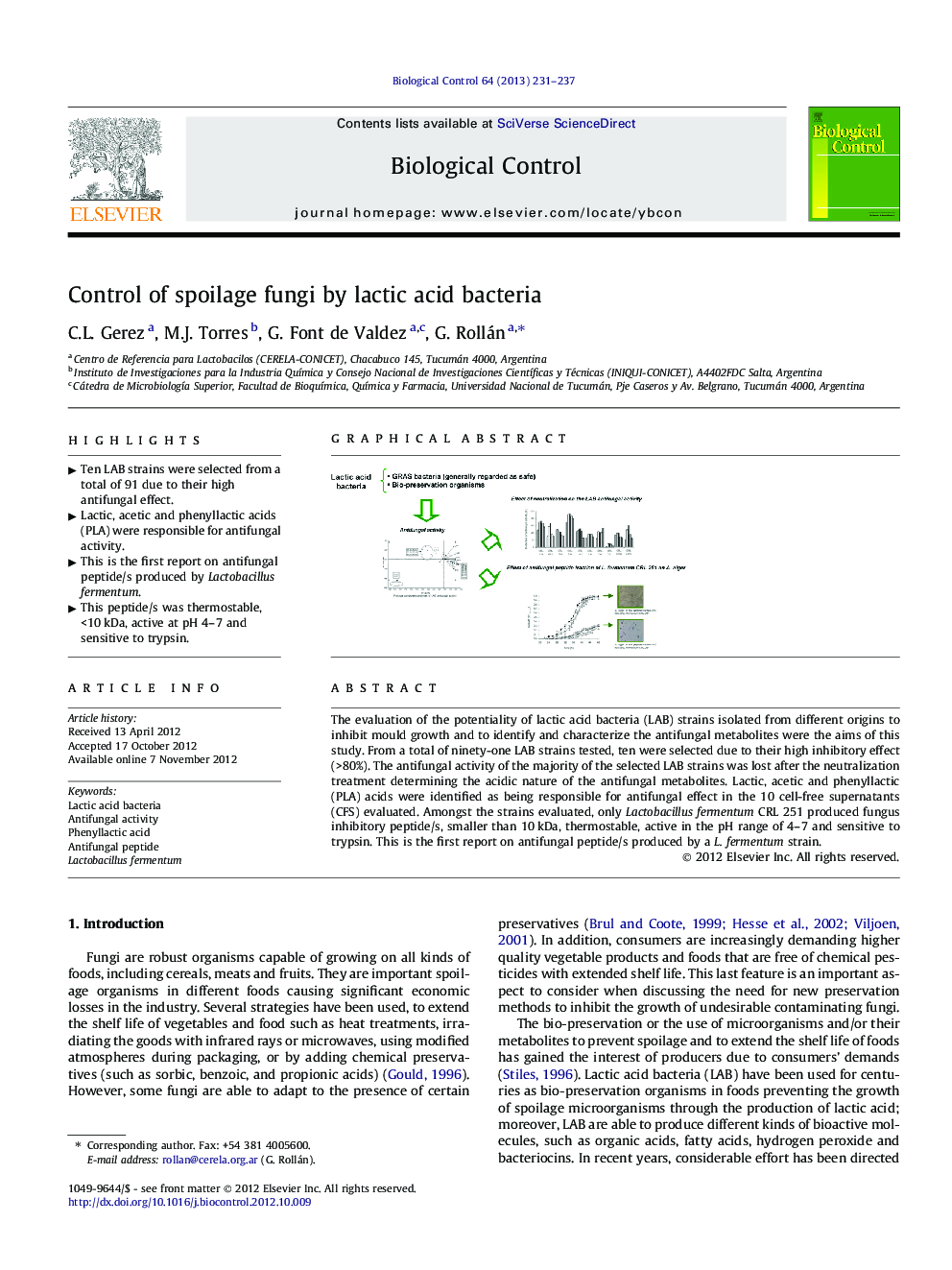| Article ID | Journal | Published Year | Pages | File Type |
|---|---|---|---|---|
| 6372783 | Biological Control | 2013 | 7 Pages |
The evaluation of the potentiality of lactic acid bacteria (LAB) strains isolated from different origins to inhibit mould growth and to identify and characterize the antifungal metabolites were the aims of this study. From a total of ninety-one LAB strains tested, ten were selected due to their high inhibitory effect (>80%). The antifungal activity of the majority of the selected LAB strains was lost after the neutralization treatment determining the acidic nature of the antifungal metabolites. Lactic, acetic and phenyllactic (PLA) acids were identified as being responsible for antifungal effect in the 10 cell-free supernatants (CFS) evaluated. Amongst the strains evaluated, only Lactobacillus fermentum CRL 251 produced fungus inhibitory peptide/s, smaller than 10Â kDa, thermostable, active in the pH range of 4-7 and sensitive to trypsin. This is the first report on antifungal peptide/s produced by a L. fermentum strain.
Graphical abstractDownload full-size imageHighlights⺠Ten LAB strains were selected from a total of 91 due to their high antifungal effect. ⺠Lactic, acetic and phenyllactic acids (PLA) were responsible for antifungal activity. ⺠This is the first report on antifungal peptide/s produced by Lactobacillus fermentum. ⺠This peptide/s was thermostable, <10 kDa, active at pH 4-7 and sensitive to trypsin.
